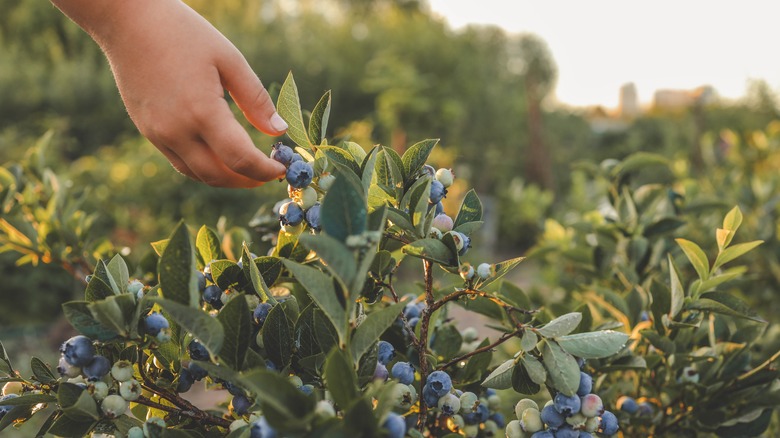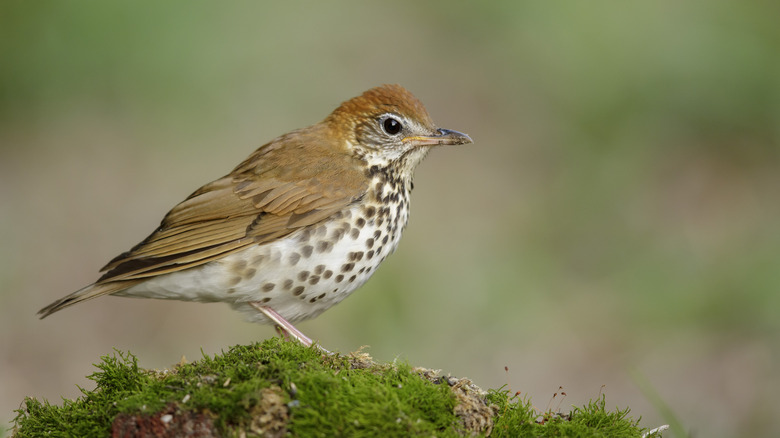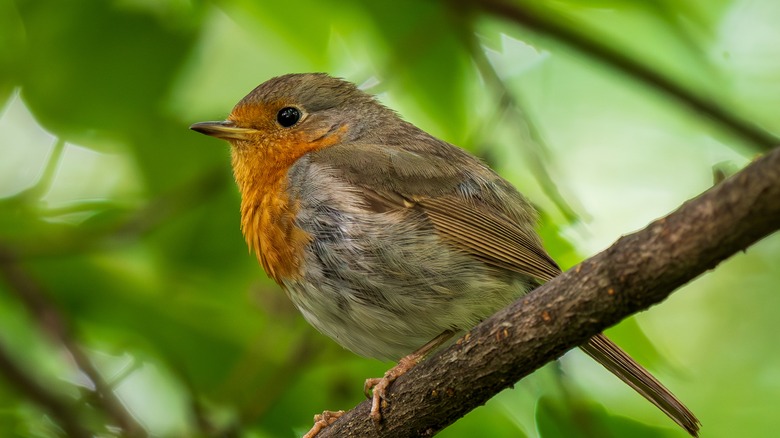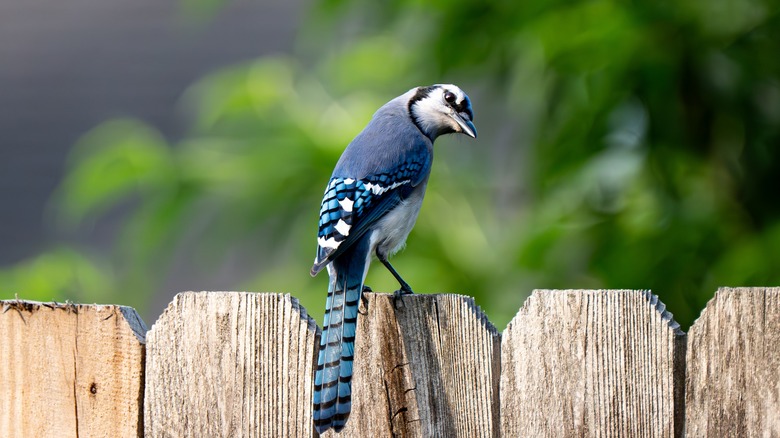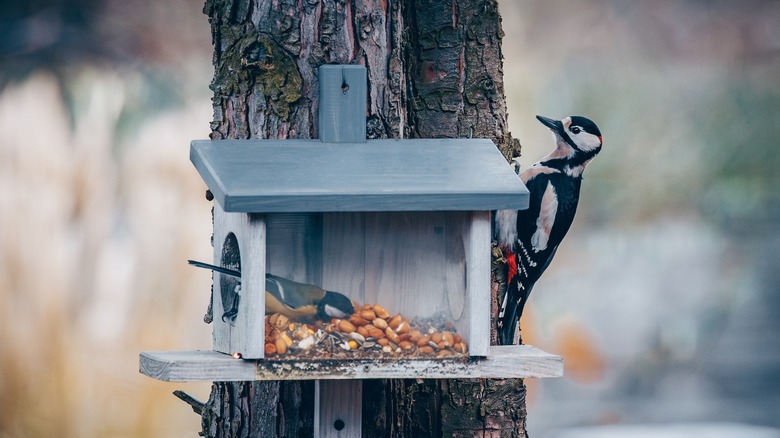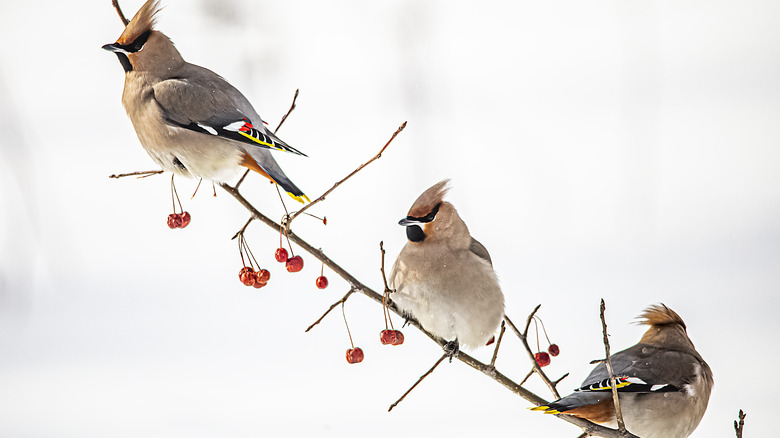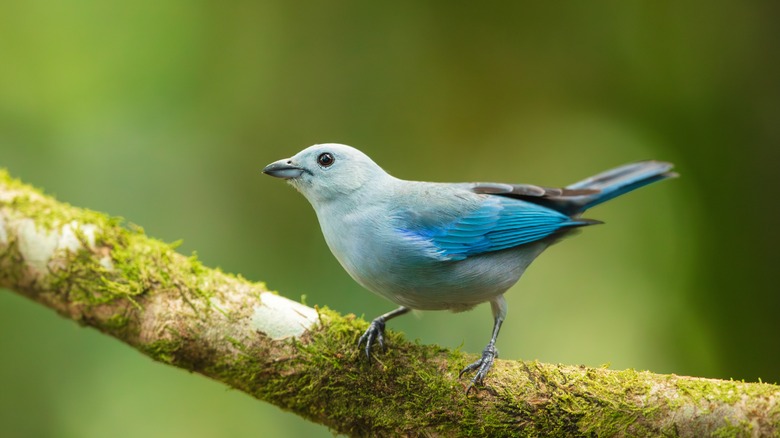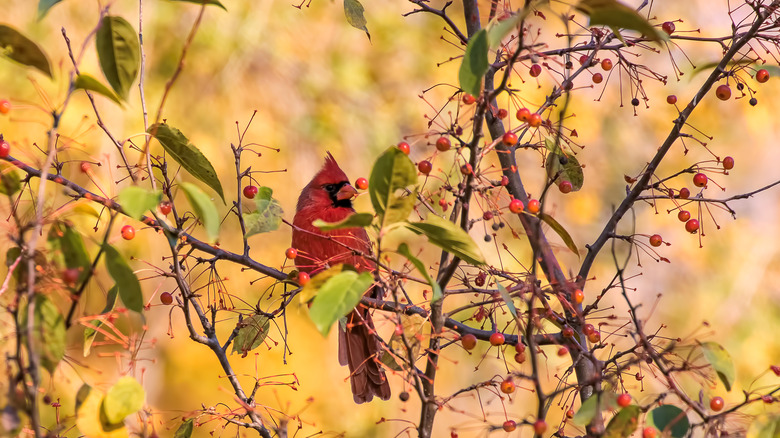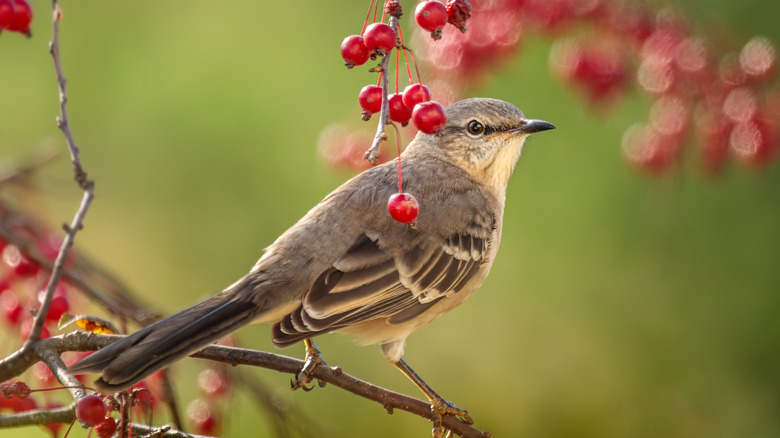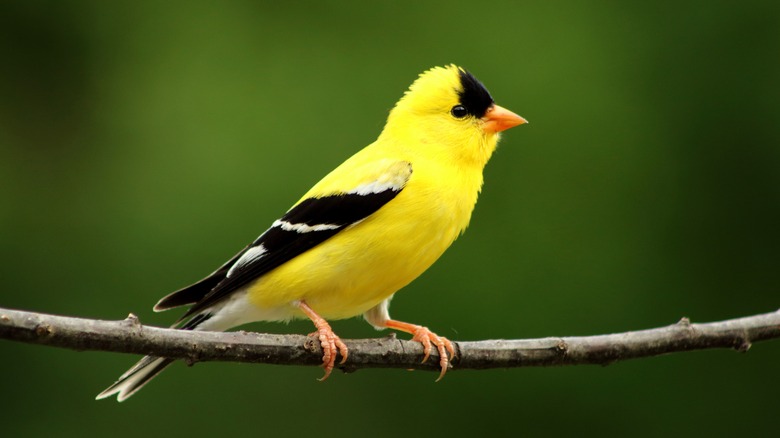Which Birds Are Most Likely To Try To Eat Your Garden Berries?
You've been waiting all season for this moment: Your berry bushes are finally bursting with color, and you're ready to enjoy the fruits of your labor — literally. But when you head outside to take a peek, you find half of your blueberries picked clean, and all of your strawberries seem to have vanished overnight. Sounds familiar? If so, you should know that you're not the only one excited about your harvest. Birds love berries just as much as you do, and for them, you just served up an all-you-can-eat buffet of deliciously ripe treats.
The truth is, most species of birds aren't picky when it comes to berries. If it's ripe and juicy, they'll most likely eat it. As most birds are foragers anyway, especially during winter months, they may see your berry patch as a lucky find. Certain species are notorious for getting around garden defenses just to get at these delicious berries, while others may happen upon your garden. Knowing which birds to watch out for can help you take the right steps to protect your harvest before they swoop in and claim it as their own. There are several common species of berry-loving birds that you have no doubt seen lurking around your garden. With a few helpful tips and some insight on their feeding habits, you can better prepare your outdoor spaces so you don't lose your harvest to them.
Thrushes
Thrushes are typically solitary birds, fiercely protecting their chosen bushes from other competitors. While several species of thrush, like robins and bluebirds, may fly south during the winter, a few stay behind to sustain themselves on berries. Hermit thrushes, found on the east coast, and varied thrushes, on the west coast, both feed on elderberries, raspberries, snowberries, and crabapples. They prefer sheltered spots to feast, so pruning back branches can help to prevent over-foraging. They don't tend to be picky about ripe fruit, so once they come to your garden, they'll most likely stick around.
Robins
Robins might be best known for tugging worms out of the ground around your garden, but they also have a soft spot for berries. They particularly enjoy eating sumac, hollies, juniper berries, and hawthorns. American robins typically eat lots of fruit in the fall and winter months, when insects are less available to them. Additionally, they are fairly social birds, especially when they are eating. If you notice an entire flock of birds going after certain bushes around your garden, it's most likely a group of robins. If your garden has dense bushes, they might feel right at home.
Bluejays
Bluejays might be one of the most iconic American birds, with vibrant feathers and loud calls, but they are also notorious garden raiders. They'll happily feast on anything from strawberries to cherries and grapes. You may see them working in pairs to completely ravage your garden. Don't underestimate bluejays when it comes to preventative measures either, as they are extremely intelligent birds. Simple garden defense mechanisms may not work to completely deter this species like they would with other birds. You may have to try offering a distraction feeder with peanuts to keep them off your precious bushes.
Woodpeckers
You may not associate woodpeckers with berries, but these birds have a surprising sweet tooth. In addition to small insects, woodpeckers typically feed on berries and fruit to get them through the winter. Planting a few choice berry bushes is one of the ways to help woodpeckers overwinter in your yard. Their tastes range from poison ivy and sumac to hawthorn and Rocky Mountain juniper. They also tend to prefer eating alone. Depending on the species that thrives in your area, you may need to protect your prized berry bushes with reflective devices or a net.
Waxwings
Cedar waxwings are particularly fond of berry bushes in your garden — in fact, their name comes from their love of cedar or juniper berries. Their diet typically consists of various wild fruits, including elderberries, wild cherries, cedar berries, and mulberries. When it comes to feeding, you may notice that they prefer to feast in flocks, either eating small insects off trees or your home-grown berries. If you live in a region where these birds are common, you may need to take precautions like netting when growing berries, as one flock can easily strip your bushes down to their leaves.
Tanagers
The Scarlet Tanager is another backyard songbird that thrives on berries. Typically found on the east coast of the United States, these small birds eat softer fruits like strawberries, blackberries, huckleberries, Juneberries, and mulberries. They tend to stick to forest edges, so if your garden backs up to woods, you might be in prime tanager territory. While they don't flock in large numbers like waxwings, they'll return repeatedly for berries. Tanagers may seem like a nuisance, but they are one of the birds that you want to attract to your garden, as they are particularly good at catching insects like wasps.
Cardinals
The northern cardinal is a backyard favorite thanks to its bright red plumage, but don't let its charm fool you — they're serious berry thieves. Cardinals have a vastly varied diet that ranges from seeds or insects to berries and fruits, although baby cardinals are typically fed insects. They tend to stick fairly close to feeders and low shrubs, making berry bushes an easily accessible target. Cardinals typically feed at dawn and dusk, so be mindful of their habits if you are going to harvest any fruit. They may also bring a few other cardinals during the winter months.
Mockingbirds
Northern mockingbirds don't just use their beaks to sing beautiful songs; they are also perfect for picking ripe fruit straight off a bush. Their diet typically consists of about insects and berries, with the latter being enjoyed in the fall and winter. Mockingbirds will typically feed on a wide range of winter berries, including sumac, holly berries, elderberries, and blackberries. They may also feed on other wild or home-grown berries, depending on the availability of varieties nearby. They can be extremely territorial when it comes to food sources, so a particular bird may stake its claim on your garden.
Finches
Across the U.S., there are 17 different finch species, each with its own eating habits. Concerning your berry harvest, the most well-known species are also the biggest culprits — the American Goldfinch and the House Finch. The latter usually enjoys berries during the summer and fall, typically feeding on cherries, strawberries, and blackberries. Goldfinches, on the other hand, will likely eat berries when seeds are not readily available. If you want to attract more finches to your garden while protecting your bushes, you may want to provide certain seeds, like thistle and sunflower, in a feeder to keep them away from your berries.
